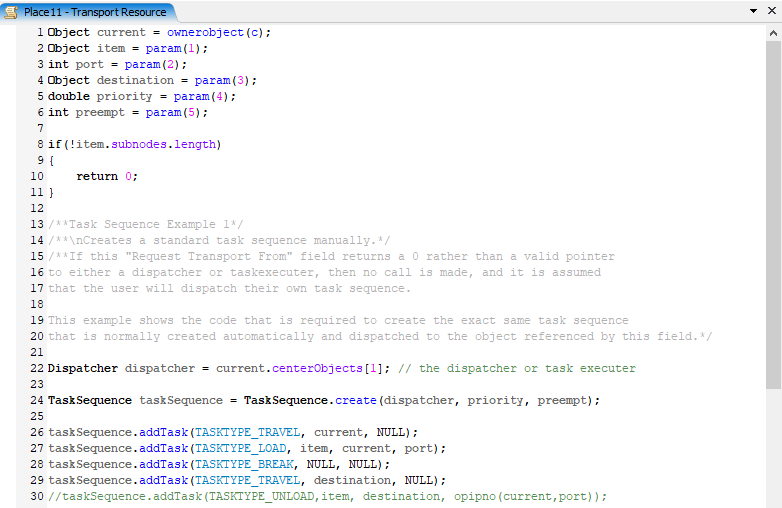Using the default method of the software, only modified the task sequence, but there is a strange problem, why?study_v2020.2.3.fsm
question
what happened about the TaskSequence ?
Hi @jiang J, was Jason Lightfoot's answer helpful? If so, please click the "Accept" button at the bottom of their answer. Or if you still have questions, add a comment and we'll continue the conversation.
If we haven't heard back from you within 3 business days we'll auto-accept an answer, but you can always unaccept and comment back to reopen your question.
1 Answer
At time 2125.35 you try to create a task sequence from Place14 to D2 to pick up the item and unload the content of the item, but the item is empty so the reference to item.subnodes[1] is invalid. This causes an exception in the transport dispatcher logic which means the task sequence is not completed. Furthermore it looks like something else is happening to the item since it's null when the TE tries to load it.
In fact, you can clearly see from the code that I didn't create this sequence of tasks, so the weird thing is why it happened. Besides, IF I create a new model and copy the logical code, no problem. I checked all the nodes and found nothing abnormal
You are unloading the "Product" item back into the queue it was picked up from and then destroy it as part of the task sequence. In between the unload and destroy task the Send to Port and Dispatcher logic of the queue fires and tries to create a task sequence for the item which fails due to the reasons Jason mentioned.
To get around this, you could add a clause to either the Send to Port or Dispatcher logic to ignore items that don't possess any subnodes.

The background of the problem is that total of 10 buffer areas from place1 to place10 will arrive at the item at random and be transported to the three processing stations D1-D3 through two crown blocks. The general idea is to monitor the buffer area and the processing station in two directions, and use the task sequence to send and request.
When the item arrives and the processing stations is empty, it will be sent to the processing stations actively,
otherwise wait;When the Processing finished and there is still items, the processing station actively requests to send it At the same time, the items follows the FIFO principle .it can be solved by code, but it seems too complex to be conducive to centralized control and modularization. Therefore, I want to study how to realize it by simply modifying the logic embedded in the software in advance. Is there a simpler and more reliable implementation method? Thanks for helping .Do you have a better solution,It would be better if the model could be provided
question details
16 People are following this question.
